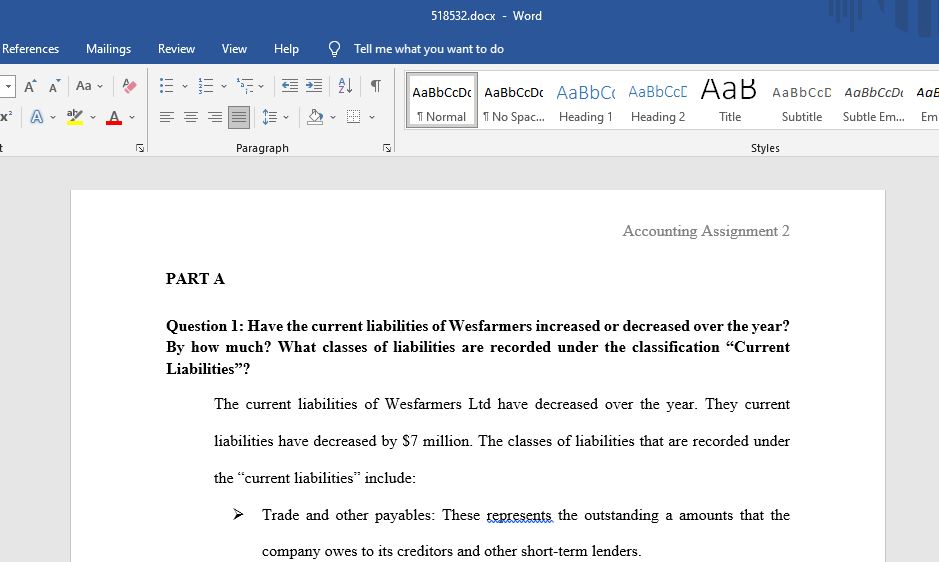What classes of liabilities are recorded under the classification “Current Liabilities”?
Refer to the consolidated financial statements and notes in the 2017 financial report of Wesfarmers on its website, http://www.wesfarmers.com.au/docs/default-source/reports/j000901-ar17_interactive_final.pdf?sfvrsn=4 and answer the following questions:
- Have the current liabilities of Wesfarmers increased or decreased over the year? By how much? What classes of liabilities are recorded under the classification “Current Liabilities”?
- What are the major liabilities of Wesfarmers at the end of the financial year?
- What items are included under the heading ‘Provisions’ in the ‘Current Liabilities’ section of the statement of financial position (balance sheet)? Explain the nature of these items. Do these satisfy the definition of provisions as contained in IAS37/AASB137? By how much have liabilities for employee benefits increased over the year?
- How much cash has been raised by interest-bearing loans in the most recent financial year? How much of such loans has been repaid? How do these amounts compare with the previous year?
- Determine whether any of the non-current liabilities are secured.
- Are there any non-current provisions? If so, what, in very general terms, do these represent?
Part B (50 marks)
Refer to the 2017 annual report of Woolworth on its website, and answer the following questions using the consolidated income statement and balance sheet/ statement of financial position and notes to the consolidated financial statements.
- The Woolworth income statement shows a deduction (in brackets) for income tax expense. Would this expense item be seen in the income statement of a partnership? Explain your answer.
- In the statement of changes in equity regarding retained earnings, how is the total profit available appropriated? How does the allocation of the total profit available for appropriation in a partnership differ from that shown for Woolworth Limited? Explain the reasons for any differences.
- Refer to the balance sheet (statement of financial position) of Woolworth and the note titled ‘issued capital’. How do these differ from that of a typical partnership? Explain.
- Woolworth is required to produce a statement of cash flows (cash flow statement) and include this in its annual financial statements. Would the typical partnership be required to prepare such a statement? Why or why not? Would a typical partnership prepare such a statement? Explain.
Answer preview:
Words: 1983

